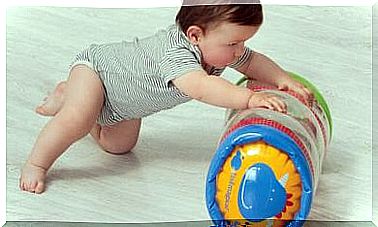How To Know If Your Child Is Paying Attention When You Talk To Him

Looking into each other’s eyes when we speak is essential to establish a good level of communication. Look your son in the eye when you talk to him and make sure he does too; Making eye contact is a good technique for knowing if she’s paying attention to you, as well as calling her out if she’s not.
And always remember that the most important thing about learning to communicate with your child is that this practice is essential to nurture a relationship full of cooperation and understanding.
Many children – and to be honest, many adults too – cannot focus on one activity at a time; Therefore, before you start talking to your child, make sure that he is looking at you and if he is not, then call him by his name to immediately capture his attention. After you’re sure you have their attention, start talking.
Applying these simple but infallible techniques will save you time and frustration, because, for example, before giving an order to your child, you will make sure that your child is paying you due attention and that he has understood what you are saying; so you no longer have to repeat the same order over and over again. Which is not only annoying for you but also for the child and for those in the house.
Also, the fact of establishing good and effective communication with you will make him feel better.
Establishing effective communication with your child has its advantages
Getting your child to pay attention to you helps you lay the foundation for a relationship based on good communication. And by doing so, and making this communication effective, you will be able to feed your relationship with him now, which is small, and always … They already say it out there, the basis of any healthy relationship is good communication.
And establishing good communication helps your child develop self-confidence and affirm relationships with others. These characteristics make his life more enjoyable and help him grow up to be an adult with good feelings about himself, in addition to fueling his ability to communicate with others.
Precisely that ability to establish and maintain good communication with your child leads him to maintain a close and quality relationship, through which he can draw cooperation strategies and express his feelings in a healthy way.
In contrast, poor communication leads your child to foster frustrating relationships, which lead to conflict and feelings of worthlessness.

Tips to get your child to pay attention to you
Learning to be a good communicator is an excellent investment not only for you but also for your child. Surely, over time, he will be able to learn this good habit from you and will have a chance to express himself effectively and freely if you allow him and if you teach him how to do it.
However, now it is necessary for parents – and adults in general – to focus on communicating better with children. To achieve this, you can enlighten yourself with some of these tips taken from the guide titled Successful Strategies for Talking with Young Children , which was published by the Washington State Department of Social and Health Services.
Listen to your child carefully:
If you want your child to pay attention to you when you talk to him, learn to listen to him too. Pay attention to what your child tells you. To achieve this, sometimes it is necessary that you stop doing what you are doing and other times you can watch it while you continue with your task.
Children typically want about 30 seconds of your attention to share their discoveries, thoughts, and enthusiasm. If you are really busy, you may well tell him that you cannot attend to him at that moment, but that you will when you are free. If you do, keep your promise and above all do not pretend that you are listening when in reality you are not, because he will realize it and it is also possible that one day he will do it to you.
Give a clear message:
If you want your child to comply with an order, then ask for simple things one at a time. If your goal is for him to bathe, dine, and lie down to sleep, then see him ordering one item at a time.
You need to know that young children do their best to carry out one command at a time. At that age it is difficult for them to remember a series of requests, so in order to communicate with him objectively then make simple requests.
Bend down to speak to him:

When you go to talk to your toddler, crouch down or pick him up so they can look into each other’s eyes as you talk. This will help you capture their attention and establish closer and more effective communication. Shouting down doesn’t yield much, nor does commanding from afar.
Let him know in advance:
When important changes are coming in the activities that your child should do, and these are diametrically opposite to those he is currently doing, then give him advance notice about what will happen.
So, for example, if your child is very entertained and happy playing with his friends, but it is time to go home and sleep, you must tell him what will happen, you can try this: In a while we will go home, When I call you, you say goodbye to your friends and we leave.
Give instructions appropriate to your possibilities:
If you want your 2-year-old to tidy up his room, saying: Son, tidy up your room is certainly an imprecise order, as he will feel confused and will not know what to do.
In that case it is much better to say: “Let’s put your shoes in the closet”, and when he does then you can ask him to help you put his toys in a box and so on … until he meets the goal.
Another infallible advice for your child to pay attention to you and also obey you is to ask him for things with a good humor. We all have a better disposition when things are asked in a beautiful way and accompanied by a please.









